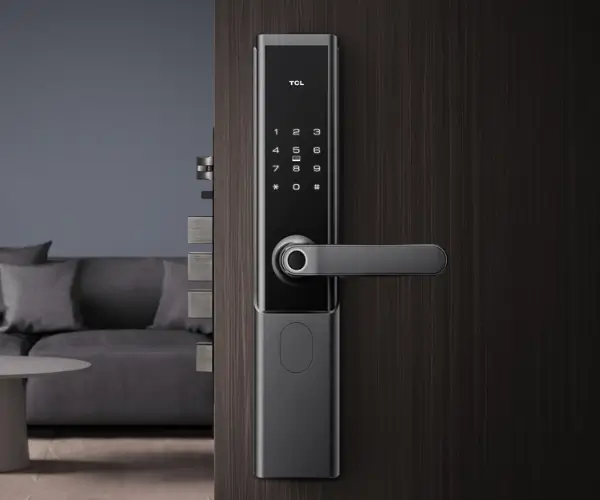Unlocking Robotics Potential: A Deep Dive into Servo Motor Control with Ultrasonic Sensors
Imagine a tiny robot navigating through a cluttered room, deftly avoiding obstacles, adjusting its position with precision, all powered by just a few clever electronic components. At the heart of this sophisticated dance lies a simple yet powerful duo: the servo motor and the ultrasonic sensor. Together, they form a foundational alliance, fueling countless innovations in robotics, automation, and DIY electronics projects.

But what exactly makes this combination so compelling? To understand, let's start with the basics.
The Power of the Servo Motor
A servo motor is a rotary actuator capable of precise position control. Unlike regular motors that spin continuously, a servo motor rotates to a specific angle, determined by the input signal, usually a PWM (Pulse Width Modulation). Its internal feedback mechanism (a potentiometer) ensures the shaft reaches and holds the desired position, making it invaluable for applications needing exact movement, such as robotic arms, steering mechanisms, or camera gimbals.
Key features of servo motors include:
Precision: Typically capable of rotating from 0° to 180°, some servos can go beyond this range. Ease of control: Simple PWM signals dictate the position. Compactness and power efficiency: Ideal for small-scale robotics projects.
Ultrasonic Sensors: Sensing Distance Like a Bat
Ultrasonic sensors operate by emitting high-frequency sound waves (usually around 40kHz) and measuring the time it takes for the echo to bounce back from an object. This echo time directly correlates with the distance, allowing robots to navigate their environment intelligently.
Features that make ultrasonic sensors popular include:
Non-contact measurement: No physical contact needed. Range: Typically from 2cm to 400cm. Cost-effectiveness: Affordable and easy to integrate.
Combining the Two: Forming a Smart Navigation System
In robotics, integrating ultrasonic sensors with servo motors creates a feedback loop that enables autonomous movement and obstacle avoidance. For example, a robot equipped with an ultrasonic sensor can constantly scan its front, and if an obstacle is detected within a certain threshold, the servo motor can adjust the robot's heading or the orientation of the sensor itself for more comprehensive scanning.
This synergy turns simple components into a smart, responsive system. Whether you're building a line follower, a obstacle-avoiding mobile robot, or an automated camera pan-and-tilt system, understanding how to code and connect a servo motor with ultrasonic sensor is foundational.
Why use code?
Embarking on any robotics project involves translating ideas into operational systems, which largely happens through meticulous coding. By mastering the control of a servo motor via ultrasonic data, you learn critical principles of sensor integration and actuation—skills that unlock endless possibilities.
Let’s consider a common project: a basic obstacle-avoidance robot. At its core, it involves reading ultrasonic sensor data, interpreting the distance, and then commanding a servo motor to rotate sensors or wheels based on real-time data.
Basic Components Needed
Here's an outline of typical components:
Microcontroller: Arduino Uno is a popular choice. Servo Motor: Any standard servo motor compatible with the microcontroller. Ultrasonic Sensor: HC-SR04 is widely used. Power Supply: Batteries or adapters suitable for your setup. Connecting cables: Jumper wires, breadboard.
Once you gather these, you can proceed to write the code that brings them all to life.
Coding the Servo and Ultrasonic Sensor: An Overview
The core logic involves:
Triggering the ultrasonic sensor to emit a pulse. Measuring the time until the echo returns. Calculating the distance. Based on distance thresholds, commanding the servo to rotate. Implementing a loop to continuously scan and react.
A simple example might involve the servo sweeping from 0° to 180°, at each step reading the ultrasonic sensor. If an obstacle is detected within 20cm, the robot stops or maneuvers away.
Step-by-step Coding Approach
Here's a high-level view:
Initialize the hardware: Set up pins for Ultrasonic Trigger, Echo, Servo, and any other components. Create functions: measureDistance() to send trigger pulse and read the echo. moveServo(angle) to rotate the servo to a given angle. scan() to sweep through angles and get distance readings. Main loop: Call scan() periodically. Analyze readings — if obstacle close, adjust servo or take action.
Next, I'll present concrete code snippets and experiments to get this system operational. But before that, let’s explore some common pitfalls and tips.
Stay tuned for Part 2, where I’ll dive into detailed coding examples, debugging tips, advanced applications, and how these systems can serve as the backbone for autonomous robots. We'll also look at real-world scenario modifications and customization to suit your projects.
Leveraging innovations in modular drive technology, Kpower integrates high-performance motors, precision reducers, and multi-protocol control systems to provide efficient and customized smart drive system solutions.




































